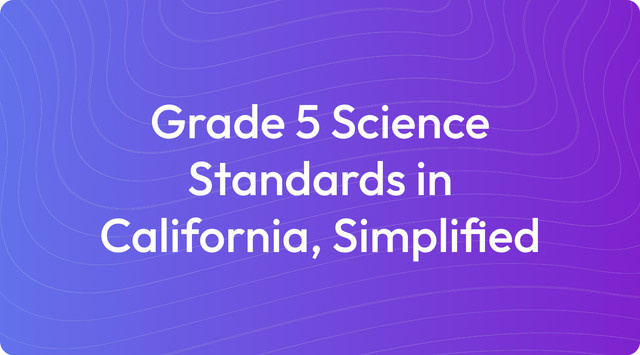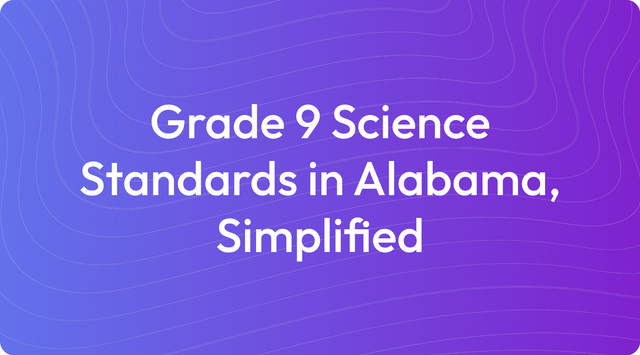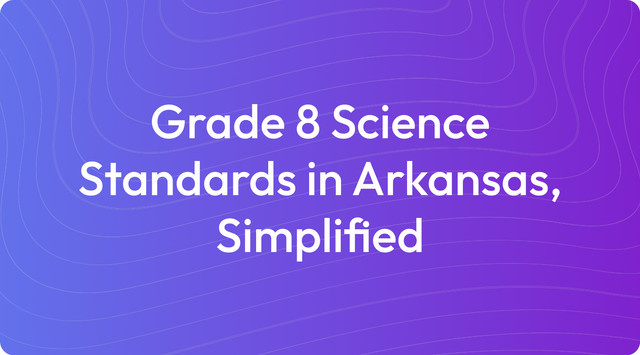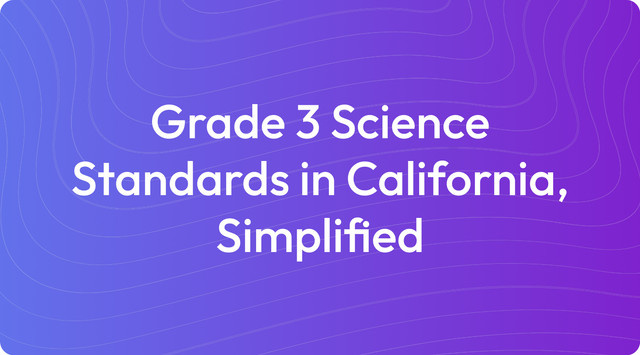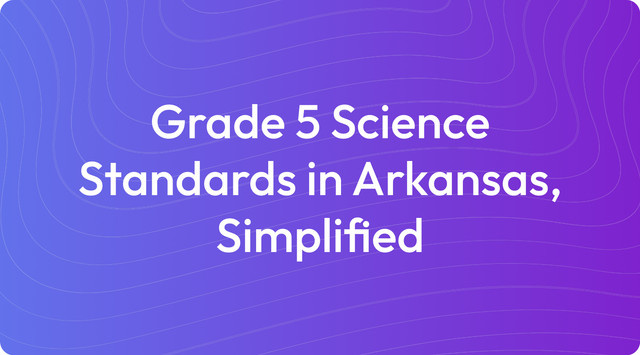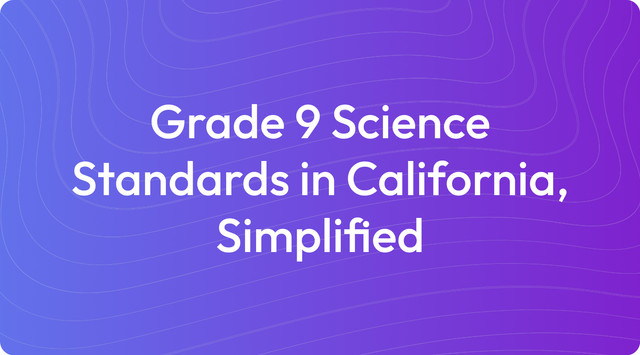Grade 7 Science Standards in California, Simplified
Grade 7 science in California: explore cells, genetics, and ecosystems simply. Find clear standards—read more on TeachShare!
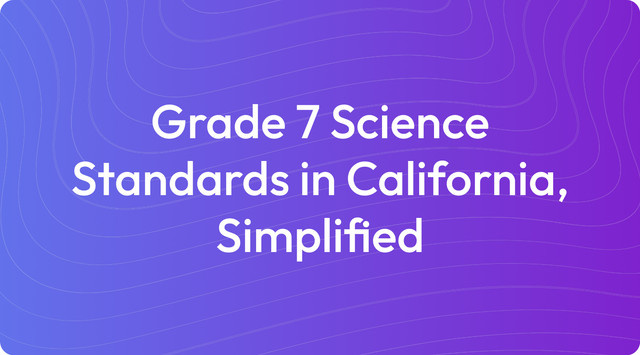
Education standards provide the blueprint for what students learn in the classroom each year. We understand that translating these guidelines into effective instruction is a key part of your work. Let's break down what standards are and how they function as a practical tool for you and your students.
At their core, education standards are a set of clear learning goals that outline what students should know and be able to do at each grade level. They provide a framework for your instruction but offer the flexibility to choose your own teaching methods and materials. For example, California's Grade 7 Science Standards set benchmarks for life and physical sciences, expecting students to be able to develop models of cells or analyze chemical reactions.
What Are Grade 7 Science Standards in California?
The Grade 7 Science Standards in California are built upon the California Next Generation Science Standards (CA NGSS). They are designed to give students a rich, hands-on understanding of science by weaving together core ideas, scientific practices, and universal concepts.
The standards are organized into four key scientific domains:
1. Life Science (LS): Structure and Function, Genetics, and Ecosystems
LS1: From Molecules to Organisms
Key Standard (MS-LS1-1): Develop a model to describe the function of a cell as a system of interacting parts (e.g., nucleus, cell membrane).
Key Standard (MS-LS1-3): Use evidence to explain how body systems interact to support life functions (e.g., digestive and circulatory systems working together).
LS3: Heredity: Inheritance and Variation of Traits
Key Standard (MS-LS3-1): Develop and use a model to describe why traits are passed from parents to offspring through genes.
Key Standard (MS-LS3-2): Use evidence to explain why individuals of the same species can have different traits (e.g., genetic variation and environmental factors).
LS2: Ecosystems: Interactions, Energy, and Dynamics
Key Standard (MS-LS2-2): Construct an explanation for how resource availability affects populations in ecosystems.
Key Standard (MS-LS2-4): Construct an argument supported by evidence that changes in an ecosystem affect populations.
2. Physical Science (PS): Chemical Reactions and Energy
PS1: Matter and Its Interactions
Key Standard (MS-PS1-2): Analyze and interpret data to determine whether a chemical reaction has occurred (e.g., color change, gas production).
PS3: Energy
Key Standard (MS-PS3-5): Construct an argument using evidence to describe how energy transfers in a system (e.g., heat transfer or energy transformations).
3. Earth Science (ESS): Earth’s History and Resources
ESS1: Earth's Place in the Universe
Key Standard (MS-ESS1-4): Construct a scientific explanation based on evidence for how the geologic time scale is used to organize Earth’s history.
ESS3: Earth and Human Activity
Key Standard (MS-ESS3-3): Apply scientific principles to design a method for monitoring and minimizing human impact on the environment.
4. Engineering, Technology, and Applications of Science (ETS): Problem Solving
ETS1: Engineering Design
Key Standard (MS-ETS1-1): Define the criteria and constraints of a design problem and evaluate solutions.
Key Standard (MS-ETS1-4): Develop and test a model to improve a solution to a problem (e.g., reducing pollution or conserving water).
These domains are connected by several Key Crosscutting Concepts:
Key Crosscutting Concepts (CCCs) for Grade 7 Science
Structure and Function: Understanding how body systems or cells are structured to perform specific functions
Energy and Matter: Exploring how energy is transferred in ecosystems or chemical reactions
Systems and Models: Using models to represent complex systems (e.g., ecosystems, cells, or Earth’s history)
We know that these standards represent a lot of ground to cover. The goal is to build a strong foundation in scientific thinking that prepares students for future learning and helps them make sense of the world around them. The framework for these standards is guided by the Next Generation Science Standards and the California Department of Education.
Key Tested Standards
When preparing for assessments, it helps to know which areas will be emphasized. The key tested standards for Grade 7 focus on a student's ability to think and act like a scientist through hands-on investigations, evidence-based explanations, and real-world applications. Aligned with the California Next Generation Science Standards (CA NGSS), these standards highlight the following key concepts:
1. Life Science (LS): Cells, Heredity, and Ecosystems
MS-LS1-1: Cell Systems
Develop and use a model to describe the function of a cell as a system of interacting parts (e.g., nucleus, cell membrane).
MS-LS1-3: Body Systems Interaction
Use evidence to explain how body systems interact to support life functions (e.g., circulatory and respiratory systems).
MS-LS3-1: Inheritance of Traits
Develop and use a model to describe how traits are passed from parents to offspring through genes.
MS-LS2-2: Ecosystem Interactions
Construct an explanation for how resource availability affects populations in ecosystems.
2. Physical Science (PS): Matter and Energy
MS-PS1-2: Chemical Reactions
Analyze and interpret data to determine whether a chemical reaction has occurred (e.g., color change, gas production, temperature change).
MS-PS3-5: Energy Transfers
Construct an argument using evidence to describe how energy is transferred in a system (e.g., heat transfer or energy transformations).
3. Earth Science (ESS): Earth’s History and Human Impact
MS-ESS1-4: Geologic Time Scale
Construct a scientific explanation for how the geologic time scale is used to organize Earth’s history.
MS-ESS3-3: Human Impact on Earth
Apply scientific principles to design methods for monitoring and minimizing human impact on the environment.
4. Engineering, Technology, and Applications of Science (ETS): Problem-Solving
MS-ETS1-1: Define a Design Problem
Define a design problem that can be solved through engineering, including criteria for success and constraints.
MS-ETS1-4: Testing and Improving Solutions
Develop and test a model to generate data for improving a solution.
Key Crosscutting Concepts (CCCs):
Systems and Models: Exploring systems like cells, ecosystems, and Earth’s history
Energy and Matter: Understanding energy movement in ecosystems, chemical reactions, and Earth’s processes
Cause and Effect: Identifying how changes in one part of a system impact the whole (e.g., resource availability affecting ecosystems)
Why These Standards Are Key for Testing:
Students are assessed on their ability to:
Develop and Use Models: For example, modeling cell systems, inheritance of traits, or energy transfers
Analyze Data: For example, interpreting data from chemical reactions or population changes in ecosystems
Construct Evidence-Based Explanations: For example, explaining how body systems interact or how the geologic time scale organizes Earth’s history
Design Solutions: For example, solving environmental problems like reducing human impact or conserving resources
The information on these standards is based on guidance from the following sources:
Example Learning Objectives for Unit Planning
Learning objectives translate broad standards into clear, student-friendly goals. They help you design focused lessons and give students a roadmap for what they will be able to do by the end of a unit. Here are examples of learning objectives for two Grade 7 Science standards, written in student-friendly language:
Standard: MS-LS1-1 (Cell Systems)
(Develop and use a model to describe the function of a cell as a system of interacting parts.)
I can identify the parts of a cell, like the nucleus, cell membrane, and mitochondria, and describe their functions.
I can create a model of a cell showing how its parts work together to keep it alive.
I can explain how cells are similar to systems, with each part performing a specific job to support life.
I can use my model to explain how damage to one part of a cell affects the whole system.
Standard: MS-LS3-1 (Inheritance of Traits)
(Develop and use a model to describe how traits are passed from parents to offspring through genes.)
I can define traits, genes, and DNA and explain how they are related.
I can create a model, like a Punnett square, to predict how traits are inherited from parents to offspring.
I can explain the difference between dominant and recessive traits using real-world examples, like eye color.
I can describe how genetic variation occurs and why individuals of the same species can look different.
Key Changes & Updates
The most significant update to the Grade 7 Science Standards came with the 2013 adoption of the California Next Generation Science Standards (CA NGSS). This marked a fundamental change in science education, moving away from rote memorization toward a more dynamic, three-dimensional approach. This framework encourages you to weave together three key elements in your instruction: Science and Engineering Practices (what students do), Disciplinary Core Ideas (what students know), and Crosscutting Concepts (how students think). The goal is to help students build a deeper understanding by actively investigating phenomena, analyzing data, and constructing evidence-based explanations.
In practice, this means your classroom activities will likely focus more on hands-on, inquiry-based learning and real-world applications. The standards now integrate engineering design, prompting students to define problems and develop solutions. There is also a greater emphasis on connecting science with math and literacy, as students learn to interpret data and communicate their findings. These changes are designed to make science more engaging and relevant for students, building the critical thinking and problem-solving skills necessary for future learning.
Create with TeachShare
We understand that turning these detailed standards into engaging, classroom-ready materials takes significant time and effort. Our platform is designed to help you with this process, giving you back valuable instructional time. Start creating standards-aligned instructional resources with TeachShare now.
Frequently Asked Questions
What makes the NGSS different from previous science standards?
The Next Generation Science Standards (NGSS) shift the focus from memorization to application. This framework combines three dimensions of learning: scientific practices, core ideas, and crosscutting concepts. It encourages hands-on investigation and connects classroom lessons to real-world phenomena. A key component is the integration of engineering design, which challenges students to create and test solutions for practical problems.
What are the main topics covered in Grade 7 Science?
The Grade 7 science curriculum is built around four key areas. Here is a summary of the core topics:
- Life Science: Students explore cell structure and function, heredity and genetic traits, and the flow of energy within ecosystems.
- Physical Science: This area covers chemical reactions and the principles of energy transfer.
- Earth Science: Lessons focus on the geologic time scale, Earth’s history, and the impact of human activity on the environment.
- Engineering Design: Students apply scientific principles to design, test, and improve solutions to real-world challenges.
How are students assessed in Grade 7 Science?
Assessments are designed to measure a student's ability to think and act like a scientist. Here are some common evaluation methods:
- Models: Students create diagrams or physical models to show their understanding of concepts like cell systems or food webs.
- Experiments: Teachers evaluate performance through hands-on investigations, such as observing chemical changes or ecosystem interactions.
- Data Analysis: A student's ability to graph, interpret, and draw conclusions from data is a key part of their assessment.
- Evidence-Based Explanations: Students are expected to construct clear arguments and write conclusions supported by data from their observations.
How can teachers make Grade 7 Science engaging?
Keeping students motivated is key to effective learning. Here are a few strategies to make science lessons more engaging:
- Use real-world phenomena: Frame lessons around relatable questions, such as "How are traits passed from one generation to the next?"
- Incorporate hands-on experiments: Let students learn by doing through activities like simulating chemical reactions or building models of ecosystems.
- Encourage project-based learning: Challenge students to work on projects that solve real problems, like designing a way to reduce local pollution.
- Use technology: Virtual labs and simulations can help make complex topics like geologic time or cellular biology easier to understand.
Why is engineering included in Grade 7 Science?
Including engineering in the science curriculum helps students connect scientific concepts to practical applications. It fosters creativity and critical thinking by asking them to design, test, and refine solutions to problems. This approach also highlights the relationship between science, engineering, and future STEM careers.
Answer


